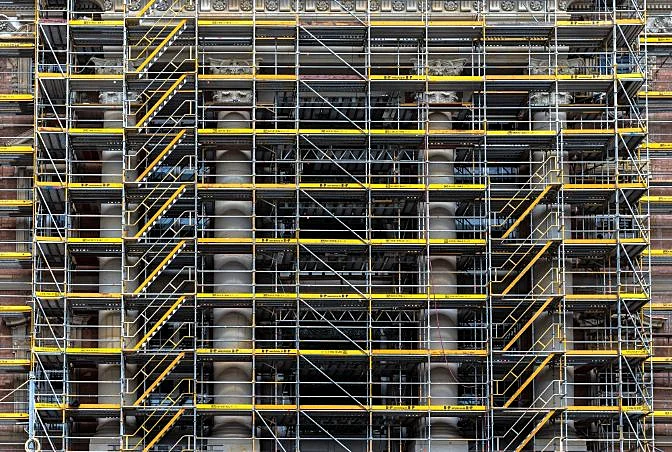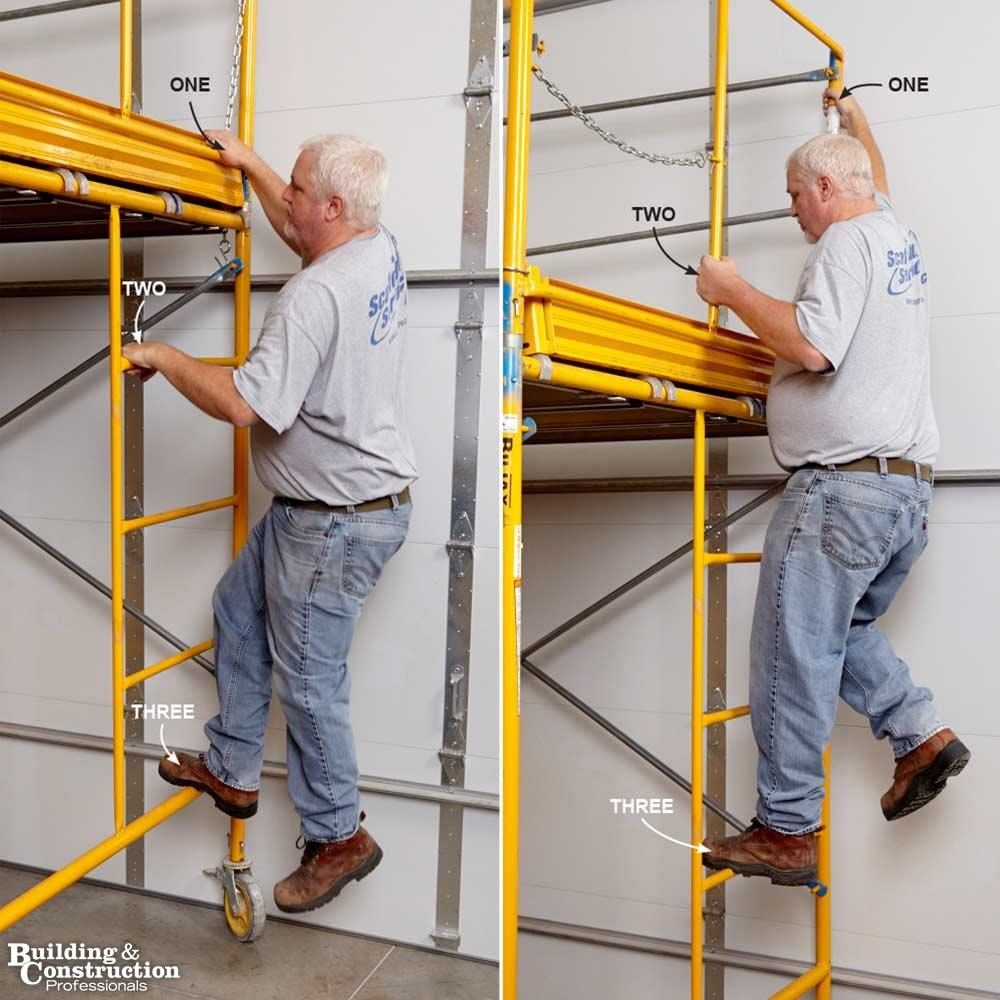Dependable Domestic Scaffolding for Homeowners in Need of Safe Renovations
Dependable Domestic Scaffolding for Homeowners in Need of Safe Renovations
Blog Article
Discovering the Numerous Sorts Of Scaffolding Made Use Of in Construction Projects
The construction market counts heavily on numerous kinds of scaffolding to meet particular project requirements, each offering distinctive advantages and applications. Typical frame scaffolding gives a durable structure for general jobs, while put on hold scaffolding is necessary for work on high-rise frameworks.

Traditional Structure Scaffolding
Typical structure scaffolding is one of the most extensively used approaches in the building and construction industry because of its robustness and versatility. This system contains vertical and horizontal structures that are constructed to develop a stable system for workers and materials. The major elements consist of vertical blog posts, straight ledgers, and diagonal dental braces, which together give a solid framework that can support significant lots.
One of the crucial advantages of traditional framework scaffolding is its flexibility to various building and construction jobs, varying from property buildings to big business structures. The modular style permits very easy assembly and disassembly, making it reliable for both short-term and lasting tasks. Furthermore, the system can be personalized in elevation and size, fitting different building designs and website problems.
Safety and security is paramount in scaffolding applications, and traditional framework systems are outfitted with guardrails and toe boards to stop falls and make sure employee defense. Regular evaluations and adherence to security guidelines are critical in maintaining the integrity of the scaffold (Scaffolding). Overall, conventional framework scaffolding stays a basic option in the building market, supplying a trusted system for labor and boosting total task efficiency

Suspended Scaffolding
Suspended scaffolding offers an unique remedy for building projects that need access to elevated surface areas, specifically in scenarios where conventional framework scaffolding may be impractical. This kind of scaffolding is normally suspended from the roof or top levels of a framework, utilizing a system of platforms, wheels, and ropes to create a functioning space that can be changed to various heights.
Among the primary advantages of put on hold scaffolding is its versatility. It can be easily repositioned or decreased to accommodate modifications in construction requirements, making it ideal for jobs such as home window installation, frontage job, and upkeep on high-rise structures. Additionally, the minimal impact of put on hold scaffolding enables much better use ground room in urban atmospheres, where area is often restricted.
Safety and security is an important factor to consider in the use of put on hold scaffolding. Correct rigging and securing systems must be utilized to make sure security and stop accidents. Operators needs to also be trained in the secure usage of this devices. Generally, put on hold scaffolding offers a efficient and efficient option for accessing hard-to-reach areas in different construction situations, boosting both performance and safety on site.
System Scaffolding
System scaffolding, commonly considered a contemporary option in the scaffolding market, contains pre-engineered parts that can be promptly set up and adjusted for different building projects. Scaffolding. This sort of scaffolding is defined by its modular design, which permits convenience and effectiveness on task sites, suiting architectural demands and different elevations
Commonly made from high-strength steel or light weight aluminum, system scaffolding provides boosted longevity and security. The components consist of vertical posts, straight ledgers, and angled braces, which adjoin safely, review ensuring a durable structure. The style frequently includes standardized installations, simplifying setting up and disassembly processes, therefore lowering labor time and expenses.

Rolling Scaffolding
Rolling scaffolding is a flexible option to conventional fixed scaffolding, developed for movement and ease of usage on building and construction websites. This type of scaffolding consists of a platform sustained by structures with wheels, permitting workers to conveniently transfer it as required. additional hints The movement function considerably enhances productivity, as it minimizes downtime related to taking apart and putting together fixed scaffolding.
Generally constructed from light-weight materials such as aluminum or steel, rolling scaffolding supplies a strong yet portable remedy for jobs requiring constant repositioning - Scaffolding. It is especially beneficial in jobs such as painting, drywall installation, and electric work, where accessibility to various elevations and places is required
Safety and security is vital in rolling scaffolding style, with features such as securing wheels to stop unintended motion when in operation, and guardrails to shield employees from falls. Additionally, lots of models are flexible in height, fitting various job needs.
Cantilever Scaffolding

The layout of cantilever scaffolding usually includes utilizing arms or braces secured to a structure or structure, enabling the system to expand external safely. Safety is paramount; hence, these scaffolds have to be engineered to endure various lots and ecological conditions. Normal assessment and maintenance are essential to make certain architectural integrity and employee security.
Cantilever scaffolding is favored for its flexibility and reliable use area, making it a preferred option in urban settings where area constraints prevail. It helps with less complicated access to high altitudes, ultimately adding to the total effectiveness of building and construction projects. As with all scaffolding kinds, appropriate training and adherence to safety requirements are crucial for workers making use of cantilever scaffolding.
Final Thought
In verdict, the diverse sorts of scaffolding utilized in building tasks each serve unique objectives tailored to particular website requirements. Standard structure scaffolding provides stability, while put on hold scaffolding supplies versatility for elevated jobs. System scaffolding promotes quick assembly, and rolling scaffolding improves wheelchair for differing workplace. Cantilever scaffolding effectively resolves obstacles in metropolitan setups. Recognizing these scaffolding kinds is important for enhancing safety and security and performance in construction, ultimately contributing to the successful completion of projects.
Standard framework scaffolding supplies a strong foundation for general tasks, while put on hold scaffolding is essential for job on skyscraper structures.Rolling scaffolding is a versatile choice to typical set scaffolding, created for wheelchair and simplicity of use on construction scaffolding vygotsky definition websites. As with all scaffolding kinds, appropriate training and adherence to safety standards are critical for employees using cantilever scaffolding.
Conventional frame scaffolding gives security, while suspended scaffolding offers convenience for raised jobs. System scaffolding promotes fast assembly, and rolling scaffolding boosts wheelchair for varying job atmospheres.
Report this page